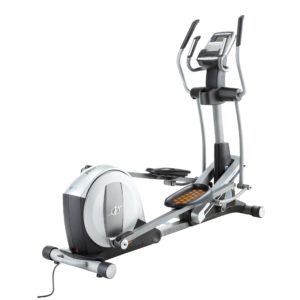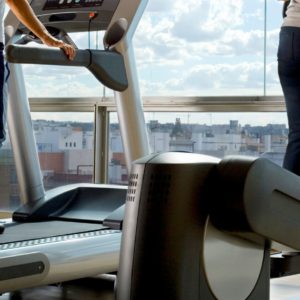How does an Elliptical compare to other fitness activities?
People are increasingly trying to make the most of their exercise time by finding the most efficient ways to burn calories and get in shape. Certain types of activities will provide different benefits such as building muscle and improving cardiovascular health. An elliptical trainer is a stationary fitness equipment that simulates a combination of running, walking, and stair climbing. The following discusses how an elliptical compares to a variety of other physical exercise activities.
1. Elliptical vs. Running Distance
Running provides a great workout whether it’s short sprints and intervals or long distances. Running long distances normally means running at a slower and more even pace. When running, you are carrying and supporting all your body weight. An elliptical will support some of your body weight. Running distances will likely burn more calories and fat in the long run. It will, however, put more strain on muscles and joints.
2. Elliptical vs. Running Weight Loss
Running for weight loss includes distance running, sprints, and various types of intervals. So when comparing different types of running for weight loss to the weight loss that can be achieved with the elliptical, running will likely be more effective. But running, especially incorporating sprints, is a very intense, high-impact type of workout. Both types of workouts could produce weight loss based on the intensity and length of each workout.
3. Elliptical vs. Running Calories
Not all experts are in agreement regarding whether you will burn more calories on an elliptical or running. There are many variables to take into consideration. A few include how fast you run, what the resistance is on the elliptical, and if arm motions are involved on the elliptical. Whether a person runs outside or inside on a treadmill is another factor to take into consideration. Even a slight amount of wind resistance outside will increase the amount of energy you’ll expend and the calories that will be burned. In general, running will likely take more calories, especially if done outside and on uneven terrain. The exception may be if the elliptical trainer has a high resistance level and you’re also using arm handles.
4. Elliptical vs. Bike
There are several factors to take into consideration when comparing a bike to an elliptical trainer. For starters, you can ride a bike outdoors in urban as well as rural areas. This means there’s less chance to get bored with your workout routine. Riding outside also means choosing between a slow pace on an even sidewalk or riding at high speeds over hills and bumpy terrain. How many calories are burned is therefore dependent on how long you ride, how fast you travel, and how difficult the terrain.
5. Elliptical vs. Walking
Walking is one of the simplest and most effective types of exercise you can do. The elliptical, however, will burn calories and fat more quickly. The advantages of walking is that it can be done almost anywhere. There isn’t any major equipment needed and almost anyone, regardless of their current health, can participate in moderate walking. Some elliptical trainers will provide moving arm handles that will work arm muscles in a way that just walking won’t.
6. Elliptical vs. Running
Running is a great way to burn fat and calories and work toward a maximum amount of weight loss. Running does put a lot of stress on the ankles, knees, and hips. If you have any injuries in those areas it would probably be better to create a workout on an elliptical. An elliptical provides motions that are similar to a combination of running and riding a bike. Being able to set different incline and resistance levels on a machine will enable you to precisely stick to a specific workout routine. When running you’ll have to constantly be aware of how fast or slow you are running to maintain a certain pace.

